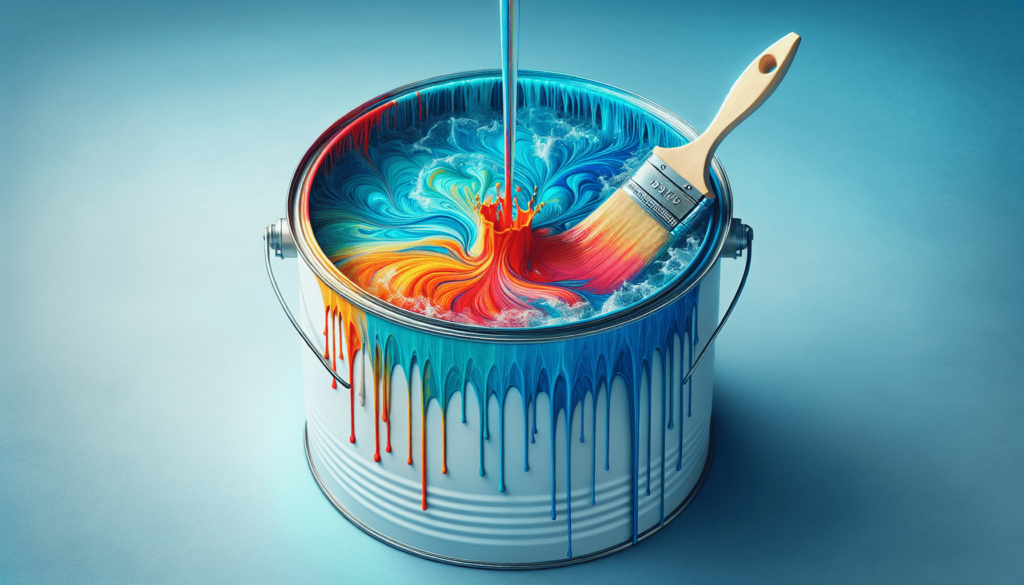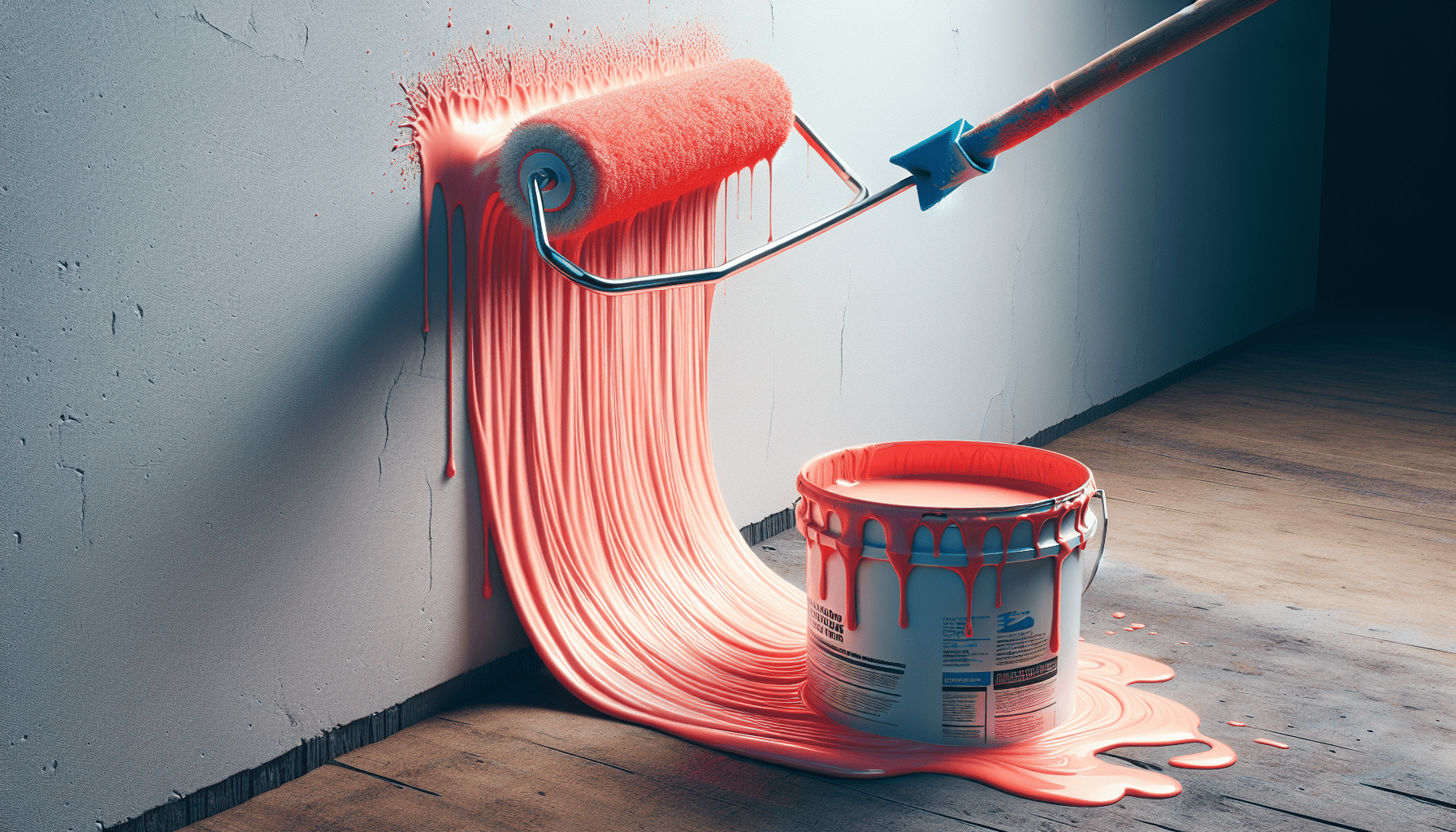In the realm of home improvement, the process of diluting latex paint is a valuable skill to possess. Understanding how to dilute this type of paint correctly can lead to smoother application, enhanced coverage, and a more professional finish. Whether you are a seasoned DIY enthusiast or a novice looking to embark on your first project, this article will guide you through the necessary steps to dilute latex paint effectively, ensuring optimal results every time. By familiarizing yourself with the recommended techniques and expert tips, you will gain the confidence needed to achieve a flawless paint job and transform any space with ease.

Understanding Latex Paint
What is latex paint?
Latex paint, also known as water-based paint, is a popular choice for interior and exterior surfaces due to its ease of use, durability, and fast drying time. Unlike oil-based paints that use solvents for thinning and clean-up, latex paint is diluted with water. Latex paint consists of pigments (colorants), binders (resins), and additives. The water acts as a carrier for these components, making latex paint easy to mix and apply.
Why would you need to dilute latex paint?
Diluting latex paint serves several purposes. Firstly, it allows you to adjust the consistency of the paint, making it easier to apply and ensuring an even coverage. Diluting the paint also promotes better adhesion to the surface being painted, resulting in a smoother and more professional finish. Additionally, diluting latex paint can extend its coverage area, potentially saving you money by reducing the amount of paint needed for a project.
Choosing the Right Dilution Method
Check the paint can label for instructions
The first step in diluting latex paint is to consult the paint can label. Most paint manufacturers provide specific instructions on the recommended dilution ratio for their products. These instructions may vary based on factors such as the paint’s color, thickness, and the type of surface being painted. Following the manufacturer’s guidelines will ensure optimal results and help you avoid any issues that may arise from improper dilution.
Consider the type of surface you’re painting on
Before diluting latex paint, it’s important to consider the type of surface you’ll be painting on. Different surfaces have different levels of porosity and texture, which can impact the desired consistency of the paint. For example, a smoother surface may require less dilution, while a rougher surface may benefit from a slightly higher dilution ratio. Understanding the characteristics of the surface will help you determine the appropriate dilution method.
Determine the desired consistency
The desired consistency of diluted latex paint depends on personal preference and the nature of the project. For most applications, a consistency similar to that of whole milk is recommended. This consistency allows for easy brush or roller application without sacrificing coverage or hiding power. However, certain projects may require a thicker or thinner consistency, such as creating a faux finish or applying a base coat. Assess your specific needs and adjust the dilution ratio accordingly.
Gathering the Materials
To properly dilute latex paint, gather the following materials:
Latex paint
Start with the latex paint you intend to dilute. Ensure the paint is in good condition, free from any contaminants, and within its recommended shelf life. Using old or expired paint may affect the overall quality and performance of the diluted paint.
Water
Water is the primary diluent for latex paint. Ensure you have access to clean, potable water. Avoid using hard water or water that contains impurities, as they may interfere with the paint’s consistency and drying properties.
Stir stick or mixing tool
A stir stick or mixing tool is essential for thoroughly blending the paint and water. Choose a sturdy stick or tool that can reach the bottom of the paint container to achieve a homogeneous mixture.
Measuring container
A measuring container, such as a graduated cup or paint mixing cup, will help you achieve accurate dilution ratios. This container should be clearly marked with measurements to ensure precise measurement of both the paint and water.
Preparing the Paint
Before you begin diluting the paint, it’s important to prepare the work area properly. Follow these steps:
Set up a well-ventilated area
Latex paint can emit volatile organic compounds (VOCs), which can be harmful when inhaled in high concentrations. To ensure your safety, dilute the paint in a well-ventilated area or, if possible, outdoors. Open windows or use fans to improve air circulation and wear appropriate protective gear, such as a respirator or mask.
Ensure the paint is at room temperature
To achieve optimal results, the latex paint should be at room temperature before dilution. Cold paint may affect the viscosity and consistency of the diluted mixture. Allow the paint to sit at room temperature for an hour or two before beginning the dilution process.
Stir the paint thoroughly
Before diluting the paint, it’s crucial to stir it thoroughly. Use a stir stick or mixing tool to blend the pigments, binders, and additives evenly. This step ensures that any settling or separation that may have occurred during storage is corrected, resulting in consistent color and quality throughout the paint.

Calculating the Proper Ratio
To achieve the desired consistency, follow these steps to calculate the proper ratio of paint to water:
Follow the instructions on the paint can
Refer to the paint can label for specific instructions on the recommended dilution ratio. Most labels provide guidelines, such as “add one part water to one part paint” or “mix three parts paint to one part water.” These ratios serve as a starting point for dilution and can be adjusted if necessary.
Start with a 1:1 ratio and adjust as needed
If the paint can label does not provide a specific dilution ratio, begin by mixing equal parts of paint and water. For example, pour one cup of paint into a measuring container and then add one cup of water. Mix the two components thoroughly and evaluate the consistency. If it is too thick, gradually add more water; if it is too thin, add more paint. The goal is to achieve the desired consistency without compromising coverage or hiding power.
Consider the paint’s thickness and color
The thickness and color of the paint can also influence the dilution ratio. Generally, darker or thicker paints may require slightly more water to achieve the desired consistency, while lighter or thinner paints may require less dilution. Take these factors into account when determining the final ratio and be open to making adjustments as needed.
Diluting the Paint
Once you have calculated the proper ratio, proceed with diluting the paint using the following steps:
Measure the desired amount of paint
Using a measuring container, accurately measure the desired amount of paint based on the determined dilution ratio. Pour it into a clean mixing container, making sure to leave enough room for the water to be added.
Add water incrementally
Add water to the mixing container gradually, following the determined dilution ratio. Pour the water slowly and steadily while stirring continuously. This incremental approach allows you to control the consistency more effectively and prevent over-dilution.
Stir thoroughly after each addition
After adding each increment of water, be sure to stir the mixture thoroughly. Stirring ensures that the water and paint are evenly mixed, creating a consistent and homogeneous solution. Pay attention to the bottom of the container, as settle paint particles may collect there and need to be fully incorporated.
Testing the Consistency
Before applying the diluted paint to your project, it’s crucial to test the consistency to ensure optimal results. Follow these steps:
Apply a small amount to a test surface
Select a small, inconspicuous area on your project or use a scrap piece of the same material to apply the diluted paint. Use a brush or roller to spread a thin, even coat on the surface. This test will help you evaluate how the paint adheres, spreads, and dries.
Check for a smooth and even finish
Observe the test surface for any irregularities or inconsistencies. The diluted paint should provide a smooth and even finish without visible brush or roller marks. It should also adhere well to the surface without any excessive dripping or running. If the test surface meets your expectations, you can proceed with confidence.
Adjust the dilution if necessary
If the test surface does not meet your requirements, you may need to adjust the dilution ratio. If the paint is too thick or leaves brush or roller marks, add a small amount of water to the mixture and repeat the test. On the other hand, if the paint is too thin or does not provide adequate coverage, add a small amount of paint and retest. Continue adjusting the dilution until the desired consistency and finish are achieved.
Tips and Precautions
To ensure successful and safe paint dilution, consider the following tips and precautions:
Avoid over-diluting the paint
While it’s important to achieve the desired consistency, be cautious not to over-dilute the paint. Too much water can weaken the paint’s binding properties, resulting in poor adhesion and durability. It may also lead to excessive drying time, reduced coverage, and an uneven finish. Always follow the recommended dilution ratios and make adjustments conservatively.
Test the diluted paint on a hidden area before starting the project
Before applying the diluted paint to your entire project, it’s wise to test it on a hidden or inconspicuous area. This test will allow you to assess the color, coverage, and drying characteristics of the diluted paint. It also provides an opportunity to make any necessary adjustments before committing to the entire project.
Use the paint within the recommended timeframe
Diluted latex paint, like its undiluted counterpart, has a limited shelf life. It is essential to check the paint can label for any specific instructions regarding the usability of the diluted paint. Using expired or spoiled paint can result in poor performance and an unsatisfactory end result.
Storing Diluted Paint
If you have any leftover diluted paint, follow these guidelines for proper storage:
Transfer the paint to a tightly sealed container
To maintain the quality and consistency of the diluted paint, transfer it to a clean, airtight container. Ensure the container is properly sealed to prevent air exposure, which may dry out the paint or introduce contaminants. Using containers specifically designed for paint storage, such as plastic paint cans with tight-fitting lids, is recommended.
Label the container with the paint information
To avoid confusion and ensure proper identification, label the storage container with relevant information about the paint. Include details such as the color, brand, and dilution ratio. This labeling will help you quickly identify the paint for future use and reduce any potential mix-ups.
Store in a cool and dry place
To maximize the shelf life of the diluted paint, store it in a cool and dry area. Extreme temperatures, high humidity, and direct sunlight can adversely affect the paint’s consistency and performance. A basement or garage that remains relatively stable in temperature and humidity is ideal for storage.
Disposing of Excess Paint
Proper disposal of excess paint is crucial for the environment and your local community. Follow these guidelines for responsible paint disposal:
Consult local regulations for proper disposal methods
Different regions have specific regulations regarding the disposal of paint. Contact your local waste management facility or visit their website to understand the proper disposal methods in your area. They can provide information on recycling programs, hazardous waste collection days, or drop-off locations for paint products.
Avoid pouring excess paint down the drain
Regardless of whether the paint has been diluted or not, never pour excess paint down the drain or into the sewer system. It can contaminate water sources, damage plumbing systems, and harm aquatic life. Follow the proper disposal methods recommended by your local waste management facility to minimize environmental impact.
Consider donating usable paint to a local organization
If you have excess usable paint that is still in good condition, consider donating it to a local organization, such as a community center, school, or charity. Many organizations rely on donated paint for various projects, and your contribution can make a significant difference. Contact these organizations to inquire about their acceptance criteria and any guidelines for donated paint.
By understanding how to properly dilute latex paint, you can achieve the desired consistency and enhance the overall quality and finish of your projects. Following the recommended guidelines, using the right materials, and performing thorough tests will help you achieve flawless results, while responsible disposal and storage practices will contribute to a cleaner and more sustainable environment.



